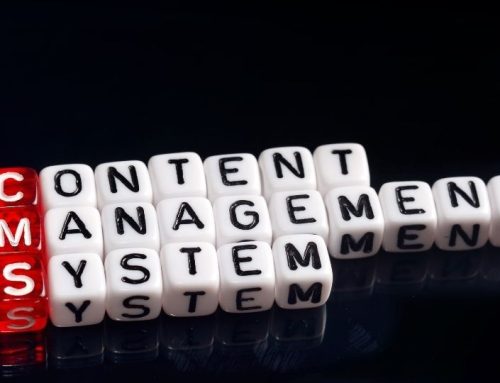Every advert we encounter — whether a billboard, TV commercial, or sponsored post — is more than just creative art. Behind every word, colour, and image lies a calculated psychological strategy designed to make you feel, think, and act in a specific way. This is the science of psychology in advertising — the study of how human emotions, cognition, and behaviour influence our response to marketing messages.
Advertisers have long understood that purchasing decisions are rarely logical. In fact, studies show that up to 95% of buying decisions are driven by subconscious emotion rather than rational thought. That’s why the most effective brands focus not just on what they sell, but how they make people feel.
The goal of modern advertising psychology is simple: to connect products and services with emotional needs and psychological triggers that drive engagement, trust, and loyalty.
This article will uncover how psychological principles like social proof, scarcity, colour theory, emotional appeal, and authority bias shape the way brands communicate with audiences — and how understanding these concepts can revolutionise your marketing strategy.
The Role of Psychology in Modern Advertising
Modern advertising is no longer just about selling products; it’s about selling meaning — the sense of identity, belonging, and aspiration that brands offer to consumers. The use of psychology in advertising bridges the gap between what people need and what they want to feel.
In today’s fast-paced digital ecosystem, consumers are bombarded with countless marketing messages every day. Amidst all that noise, it’s not logic that helps a message stand out — it’s emotional resonance. This is where psychological insight becomes invaluable.
When advertisers understand how people perceive, process, and react to stimuli, they can design campaigns that not only attract attention but influence decisions at a subconscious level.
Here are a few core psychological functions that underpin modern advertising:
- Attention and Retention: Ads are crafted to grab attention within seconds and ensure the message stays imprinted in memory through repetition and association.
- Emotional Resonance: Emotional connections make consumers more likely to remember and trust a brand.
- Behavioural Triggers: Subtle cues such as colours, typography, tone, and imagery evoke specific emotions or actions.
- Cognitive Biases: Understanding mental shortcuts — like the bandwagon effect or scarcity principle — helps advertisers motivate faster decisions.
- Brand Perception: Repeated exposure to a brand in a positive context can alter long-term perceptions and encourage loyalty.
By weaving these principles into every visual, slogan, and campaign, marketers don’t just advertise — they engineer an experience. The psychology in advertising ensures that each campaign connects with audiences on a deeper, more personal level.
Understanding Consumer Behaviour Through Psychology
At the heart of every successful campaign lies a deep understanding of consumer behaviour — why people make the choices they do, and what internal or external factors influence those choices. The application of psychology in advertising helps marketers decode these motivations and predict how consumers will respond to specific messages or stimuli. These behavioural patterns also play a major role in how brands personalise digital experiences, a concept discussed in greater detail in our “Comprehensive Guide to Behavioral Targeting”.
Consumer behaviour is shaped by both conscious and subconscious drivers. While people may justify their purchases with logical reasons such as cost or convenience, the decision-making process is largely emotional. Advertisers who recognise this are better equipped to design campaigns that resonate beyond the surface level.
1. The Emotional Mindset
Emotions are among the strongest motivators in consumer psychology. Joy, fear, pride, nostalgia, and even guilt can push people towards specific actions. For instance, insurance companies often use fear-based advertising to highlight risks, while luxury brands focus on pride and exclusivity.
2. The Role of Memory and Association
Memories are key to purchasing behaviour. The human brain constantly seeks familiarity and comfort, which is why brands invest heavily in consistent colours, jingles, and slogans. Over time, these sensory elements form positive associations that trigger automatic recall and brand trust.
3. Social Influence and Belonging
Humans are social beings who seek validation from their peers. Psychological principles such as social proof and the bandwagon effect demonstrate that people are more likely to engage with brands that others approve of. Customer testimonials, reviews, and influencer endorsements all play into this bias.
4. Perceived Value
Another central factor is how consumers perceive value — which doesn’t always align with actual value. Smart advertisers use anchoring (showing a higher price before revealing a discount) to create a sense of affordability and exclusivity at the same time.
Through strategic use of the psychology in advertising, brands can map their campaigns to align with these behavioural insights, turning simple messages into powerful tools of persuasion.
Emotional Triggers and Their Impact on Advertising Success
Emotions are the driving force behind most consumer decisions. In fact, neuroscientific research reveals that emotional engagement has a far stronger influence on buying behaviour than rational thought. This is precisely why the psychology in advertising focuses heavily on emotional triggers — because people remember how a brand makes them feel far more than the details of the product itself.
Successful advertising leverages emotional psychology to create meaningful experiences that provoke action, enhance recall, and strengthen brand affinity. Below are key emotional triggers that advertisers frequently employ to captivate audiences:
Happiness and Joy
Campaigns that elicit feelings of happiness are more likely to be shared and remembered. Bright colours, uplifting music, and cheerful narratives all contribute to creating a positive association with a brand. Coca-Cola’s “Open Happiness” campaign is a prime example — it doesn’t sell a drink, it sells a feeling.
Fear and Urgency
Fear-based marketing plays on the instinct for safety and security. Health, insurance, and cybersecurity brands often rely on fear appeals to motivate action. However, effective use of fear requires balance — excessive intensity can alienate rather than persuade.
Belonging and Connection
Humans have a psychological need for belonging. Advertisers who create a sense of community around their products, whether through brand advocacy or social proof, foster deeper emotional loyalty. Think of Apple’s ecosystem — owning an iPhone isn’t just about functionality, it’s about being part of a collective identity.
Pride and Achievement
Luxury and premium brands thrive on the emotional appeal of pride, self-worth, and accomplishment. By framing products as rewards for hard work or success, they reinforce the consumer’s self-image.
Nostalgia
Nostalgia marketing taps into positive past experiences to evoke warmth and comfort. It’s particularly effective because memories carry emotional weight — when brands reintroduce retro designs or slogans, they rekindle those feelings of familiarity.
When these emotional triggers are applied intelligently, they transform simple advertisements into memorable psychological experiences. The goal of psychology in advertising isn’t manipulation; it’s connection — speaking to the heart so that the mind follows.
Cognitive Biases That Shape Consumer Decisions

Every day, consumers make countless choices — often believing these are rational, well-thought-out decisions. In reality, most of them are influenced by cognitive biases — subconscious shortcuts that help the brain make quicker judgements. These biases are an essential aspect of psychology in advertising, as understanding them allows marketers to craft messages that align with how people naturally think and decide.
Below are some of the most powerful biases that advertisers strategically leverage to drive engagement and conversion.
1. The Anchoring Effect
The anchoring effect occurs when people rely heavily on the first piece of information they receive. In advertising, this is often used in pricing strategies. For example, if a product was “£499, now £299,” the initial higher price serves as a mental anchor, making the discounted price appear like a great deal.
2. The Scarcity Principle
When people perceive something as limited or exclusive, they are more likely to desire it. Flash sales, “limited edition” releases, or countdown timers use this principle effectively. Scarcity triggers urgency and activates the fear of missing out (FOMO), which can significantly boost conversions.
3. The Bandwagon Effect
People tend to adopt certain behaviours or preferences because others are doing the same. This is why testimonials, social media shares, and influencer marketing are so effective — they capitalise on our instinct to belong and conform.
4. Authority Bias
Consumers often trust the opinions of experts or authoritative figures. Brands use endorsements, certifications, and expert commentary to strengthen credibility. This explains why phrases like “clinically proven” or “recommended by professionals” are so common in advertising copy.
5. The Decoy Effect
When presented with multiple options, consumers often choose the one that seems most balanced in value. For example, introducing a third, slightly less appealing product option can steer people toward the one the advertiser actually wants to sell.
6. Loss Aversion
People prefer avoiding losses rather than acquiring equivalent gains. Advertisers use this psychological insight by highlighting what consumers stand to lose if they don’t act — “Don’t miss your chance,” “Offer ends today,” or “Seats filling fast.”
These cognitive biases don’t just influence individual buying decisions — they shape overall consumer trust and brand perception. When applied ethically and strategically, they enhance persuasion while maintaining authenticity. The psychology in advertising depends on understanding these subconscious influences and aligning them with clear, value-driven communication.
Colour Psychology in Advertising Design
Colour is one of the most powerful yet underestimated tools in advertising. It doesn’t just make visuals appealing — it shapes perception, emotion, and even behaviour. Every hue evokes a specific psychological response, influencing how consumers feel about a brand and whether they choose to engage with it. That’s why understanding colour psychology in advertising is a cornerstone of effective brand communication.
Advertisers carefully select colour palettes based on the emotional and cultural associations they want to convey. This is a prime example of how psychology in advertising blends aesthetics with science — using design elements to influence the subconscious mind.
Red: Energy, Passion, and Urgency
Red captures attention instantly. It’s associated with excitement, power, and action. Many fast-food and retail brands use red to create urgency or appetite stimulation (think McDonald’s or Coca-Cola). However, overuse can also evoke aggression or tension, so balance is key.
Blue: Trust, Stability, and Calmness
Blue is often used by financial institutions, healthcare providers, and technology firms because it represents reliability and security. It builds trust and communicates professionalism — a critical emotional appeal in industries where confidence matters most.
Yellow: Optimism and Warmth
Yellow exudes positivity and happiness. It’s an excellent choice for brands that want to appear friendly and approachable. However, its high visibility can cause visual fatigue, so it’s often used as an accent rather than a dominant shade.
4. Green: Growth, Health, and Balance
Green is associated with nature, sustainability, and wellbeing. It’s particularly effective in industries like health, wellness, and eco-conscious brands. It also provides a sense of calm and renewal — which helps balance stronger colours in a campaign.
Black: Sophistication and Authority
Luxury brands often rely on black to convey exclusivity, prestige, and timelessness. When paired with minimalist design, it exudes elegance and confidence — two emotional triggers that attract high-end consumers.
White: Simplicity and Purity
White symbolises clarity and openness. It is commonly used in minimalist and modern branding to create a sense of space and trustworthiness. Brands like Apple have mastered this technique to keep focus on the product while communicating innovation and simplicity.
Orange and Purple: Creativity and Ambition
Orange combines the energy of red and the cheerfulness of yellow, making it ideal for brands targeting youthful or energetic audiences. Purple, on the other hand, represents creativity, luxury, and imagination — a common choice for beauty and premium lifestyle products.
In essence, colour does far more than decorate an advertisement — it communicates meaning before a single word is read. The psychology in advertising ensures that colours are strategically chosen to elicit precise emotional reactions that align with the brand’s message and target audience.
The Power of Storytelling in Advertising Psychology
Since the dawn of human communication, stories have shaped how people understand the world. They entertain, teach, and, most importantly, connect. In advertising, storytelling does more than deliver a message — it forges an emotional bridge between brands and audiences. This is one of the most effective expressions of psychology in advertising, where human emotion meets brand narrative to drive lasting impact.
When done right, storytelling transforms a simple product into part of a consumer’s identity. It helps people feel rather than just think. And that’s what makes it memorable.
1. The Emotional Journey
Stories evoke empathy. When a brand tells a relatable or aspirational story, it triggers emotional resonance — joy, hope, sadness, or inspiration — that stays in memory long after the ad ends. For instance, John Lewis’s Christmas campaigns consistently evoke emotion through heartfelt storytelling, resulting in high engagement and brand warmth.
2. The Hero’s Narrative
Most successful advertising follows a storytelling framework similar to the “hero’s journey” — the consumer faces a problem, the brand becomes the guide, and the product serves as the solution. This psychological formula gives audiences someone to root for and a reason to trust the brand.
3. Authenticity and Connection
Today’s consumers crave authenticity. A compelling story grounded in real values or true events builds trust and emotional depth. By revealing brand purpose — not just product features — companies create a more human connection.
4. Memory and Recall
Neuroscience shows that stories activate multiple areas of the brain, enhancing memory retention. This means that an advert with a strong narrative is far more likely to be remembered than one focused solely on facts or visuals.
5. Consistency Across Platforms
Storytelling in advertising extends beyond a single campaign. A cohesive narrative across social media, print, and video strengthens the brand identity. It allows the audience to recognise, trust, and emotionally invest in the message over time.
Ultimately, the psychology in advertising thrives on narrative — because stories give meaning to information. They transform an advertisement from a sales pitch into an experience that people want to engage with, remember, and share.
Subliminal Messaging and the Subconscious Mind in Advertising
Beneath every conscious decision lies a vast network of subconscious influences — memories, emotions, and instincts that quietly guide our choices. The psychology in advertising often taps into this hidden layer of the mind, using subtle cues that bypass conscious awareness but still shape perception and behaviour. This is where subliminal messaging comes into play.
Subliminal messaging refers to stimuli — words, images, or sounds — presented below the threshold of conscious perception. Although the human brain may not consciously recognise them, these messages can influence emotions and preferences in subtle yet measurable ways.
The Science Behind Subliminal Influence
The subconscious mind processes information much faster than the conscious mind. When exposed to subtle visual or auditory cues, people may form opinions or emotional responses without realising why. For example, a fleeting image of happiness can make a viewer more positively inclined towards a product.
While overt manipulation is unethical, advertisers often employ micro cues — like specific colour tones, background music, or facial expressions — to reinforce emotional impact. These aren’t about trickery but about enhancing resonance and creating a more immersive experience.
Examples of Subconscious Advertising
- Hidden Shapes and Symbols: Some brands integrate subliminal imagery into logos or designs. The FedEx logo’s hidden arrow, for example, subtly communicates speed and direction.
- Sound Design: Background music tempo and tone can influence mood and purchasing intent. Slower tunes in restaurants, for instance, make customers linger longer.
- Smell and Sensory Marketing: Retailers often use scents to create a specific atmosphere — from luxury to comfort — encouraging subconscious associations with their brand.
Ethical Use of Subliminal Cues
The ethical debate around subliminal advertising stems from its ability to influence without awareness. Ethical advertisers use these cues to enhance the consumer experience, not manipulate it. For instance, using warm lighting or harmonious colour schemes to evoke calmness is acceptable — planting deceptive imagery or messaging is not.
The subconscious mind is a powerful driver of decision-making, accounting for most of our emotional responses. By understanding it, marketers can create more empathetic, relevant campaigns that connect with audiences on a deeply human level. This balance between psychology, emotion, and ethics defines the responsible use of psychology in advertising.
Neuromarketing: How Brain Science Shapes Advertising Strategy

The rise of neuroscience in marketing has transformed how brands understand and influence consumers. Rather than relying on assumptions or surface-level analytics, neuromarketing dives directly into how the human brain reacts to advertising stimuli. It’s the most scientific application of psychology in advertising, revealing what truly captures attention, drives emotion, and inspires action.
1. What Is Neuromarketing?
Neuromarketing uses tools like EEG (electroencephalography) and fMRI (functional magnetic resonance imaging) to study how people respond to marketing materials — from TV ads and social media posts to packaging and website layouts. By observing brain activity, advertisers can determine which emotions and cognitive processes are triggered by specific messages, colours, sounds, and visuals.
This approach moves beyond surveys or focus groups. Rather than asking consumers what they think, neuromarketing measures how they actually feel — often revealing unconscious preferences that traditional research can’t detect.
2. How Brands Use Neuromarketing
Companies use neuromarketing insights to refine every stage of the advertising process.
- Visual Attention: Eye-tracking and brain scans identify which areas of an ad draw attention first.
- Emotional Engagement: By measuring responses in brain regions linked to pleasure and reward, brands can determine how effectively an ad connects emotionally.
- Memory Retention: Neurological testing helps assess which messages or visuals are most likely to be remembered.
For instance, brands like Google, Coca-Cola, and Nike use neuromarketing to optimise ad placement, packaging design, and storytelling — ensuring campaigns don’t just attract attention but linger in memory.
3. The Emotional Brain and Decision-Making
Neuromarketing research shows that emotional and instinctive parts of the brain (like the amygdala and limbic system) play a greater role in decision-making than the rational cortex. That’s why ads that evoke feelings — joy, pride, empathy, or excitement — are far more persuasive than those relying solely on facts.
4. The Ethical Dimension
While neuromarketing provides unprecedented insight, it raises ethical considerations about consumer manipulation. Responsible application ensures that psychological insights are used to enhance relevance, not exploit vulnerabilities. Ethical brands employ neuromarketing to create positive, meaningful experiences aligned with their audience’s values and wellbeing.
In short, neuromarketing reinforces the central principle of psychology in advertising — understanding people at a deeper, emotional level to build authentic, impactful, and ethical communication strategies.
advertising Persuasion Techniques Based on Psychological Principles
The art of persuasion lies at the very core of advertising. By applying behavioural science and psychological principles, marketers can create campaigns that do more than inform — they influence. Every persuasive advert is built upon an understanding of how the human brain perceives, processes, and responds to information.
The psychology in advertising uses several key persuasion techniques to achieve this influence while maintaining ethical integrity and authenticity.
The Reciprocity Principle
People are naturally inclined to return favours. When a brand offers something of value — such as free content, samples, or discounts — it builds goodwill, prompting customers to reciprocate with engagement or loyalty.
The Principle of Consistency
Consumers prefer to act in ways consistent with their past behaviour and self-image. Once they’ve publicly expressed interest or taken a small step (like subscribing to a newsletter), they are more likely to continue along the buyer’s journey.
Social Proof
One of the strongest persuasion techniques, social proof relies on the influence of others. Customer testimonials, user-generated content, and influencer endorsements reinforce trust by showing that others have already benefited from the product or service.
Scarcity and Urgency
Psychologically, people value things more when they perceive them as scarce. Limited-time offers and low-stock notifications activate urgency and FOMO (fear of missing out), prompting faster decisions.
5. Authority and Credibility
Audiences trust experts and authoritative figures. By showcasing certifications, awards, or expert endorsements, brands position themselves as credible and reliable, increasing conversion likelihood.
The Liking Principle
People are more likely to buy from brands they like. Personalised messaging, authentic tone, and relatable storytelling all contribute to brand likability. This emotional connection fosters both trust and loyalty.
The Commitment Strategy
Encouraging micro-commitments, such as signing up or adding an item to the cart, increases the likelihood of a final purchase. Once consumers have invested time or effort, they feel compelled to complete the process.
These persuasion techniques, when guided by ethical application of psychology in advertising, help brands connect meaningfully with audiences — creating genuine influence rather than manipulation.
The Power and Responsibility of Psychology in Advertising
Advertising is no longer just about catchy slogans or aesthetic visuals — it’s about understanding why people think, feel, and act the way they do. The psychology in advertising transforms marketing into a science of empathy, combining behavioural insight with creativity to craft messages that truly resonate.
From emotional triggers to cognitive biases, from storytelling to colour psychology, every element of an advert contributes to shaping perception and memory. The most successful brands understand that consumer decisions are rooted not in logic but in emotion — and that trust and connection are built through authentic, value-driven communication.
Key Takeaways
- The psychology in advertising explores how emotions, cognition, and subconscious cues influence buying behaviour.
- Emotional storytelling, colour theory, and neuromarketing all help craft more persuasive and memorable campaigns.
- Cognitive biases like social proof, scarcity, and authority bias shape how consumers perceive brands.
- Ethical advertising balances influence with honesty, ensuring transparency and respect for the audience’s autonomy.
- The future of advertising lies in empathy — understanding the human mind to create genuine, long-term connections.
In the end, advertising psychology is not about manipulation; it’s about meaning. It’s the bridge between brand and consumer — a blend of science, art, and humanity that drives not just conversions, but connection.
Final CTA
At Smart Digitants, we combine creative strategy with psychological insight to help businesses craft campaigns that truly connect. Whether you’re launching a brand, refining your messaging, or scaling your reach, our experts can help you harness the science of persuasion for measurable growth.
Get in touch with Smart Digitants today — and let’s turn your marketing into a meaningful experience that drives emotion, trust, and results.
Our Content Writing Team at Smart Digitants is a group of dedicated professionals, passionate about creating high-quality, engaging content.
- The Role of Psychology in Modern Advertising
- Understanding Consumer Behaviour Through Psychology
- Emotional Triggers and Their Impact on Advertising Success
- Cognitive Biases That Shape Consumer Decisions
- Colour Psychology in Advertising Design
- The Power of Storytelling in Advertising Psychology
- Subliminal Messaging and the Subconscious Mind in Advertising
- Neuromarketing: How Brain Science Shapes Advertising Strategy
- advertising Persuasion Techniques Based on Psychological Principles
- The Power and Responsibility of Psychology in Advertising









